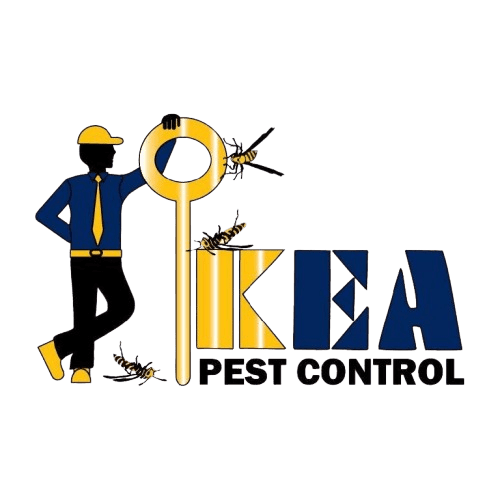Integrated Pest Management (IPM): Eco-Friendly Pest Control for Homes, Schools, and Businesses

Posted on August 20th 2025
What is Integrated Pest Management (IPM)?
Integrated Pest Management (IPM) is a common-sense, eco-friendly approach to pest control that focuses on prevention, monitoring, and using the least-toxic methods available. Instead of relying on routine chemical sprays, IPM combines non-chemical pest control strategies such as sanitation, exclusion, and habitat modification with targeted pesticide use only when necessary.
The goal of IPM is to not only eliminate existing infestations but to prevent pests from returning—making it a sustainable pest management strategy for homes, schools, municipalities, and businesses.
Why Choose IPM Over Traditional Pest Control?
Traditional pest control often means scheduled pesticide spraying regardless of actual pest activity. This can lead to unnecessary chemical exposure, wasted treatments, and resistance in pest populations.
By contrast, Integrated Pest Management:
- Monitors and identifies pests before treatment decisions are made.
- Sets action thresholds (only treating when pests reach a problem level).
- Uses non-chemical pest control methods first (sanitation, sealing entry points, habitat changes).
- Applies least-toxic pesticides in precise, targeted applications only when necessary.
This preventative pest control strategy protects people, pets, and pollinators while keeping properties pest-free long-term.
IPM for Homeowners: Safe Pest Control at Home
Homeowners can easily implement parts of an IPM program themselves—or request professional services that follow IPM principles. The focus is on prevention and exclusion to reduce reliance on chemical products.
Home IPM Checklist:
- Ant Prevention: Seal cracks, store food properly, and use baits instead of sprays.
- Rodent Control: Seal entry points, use traps, and keep garbage sealed.
- Cockroach Control: Fix leaks, reduce clutter, and use gel baits in targeted areas.
- Structural Repairs: Caulking gaps, repairing screens, and weatherproofing entry points.
- Sanitation: Regularly clean kitchens, basements, and storage areas to remove pest food sources.
By following this checklist, homeowners can manage pests with eco-friendly, preventative pest control and reduce pesticide use indoors.
IPM for Schools, Municipalities, and Businesses
Commercial buildings, municipal facilities, and schools often face unique pest pressures due to high traffic, food preparation areas, and multiple entry points. IPM is especially important here because it protects large groups of people, including children and those with chemical sensitivities.
A Successful IPM Plan for Businesses and Schools Includes:
- Written policies outlining responsibilities and communication systems.
- Regular pest monitoring and reporting logs.
- Defined action thresholds (knowing when a pest population becomes unacceptable).
- Hierarchy of treatment methods—starting with prevention, then exclusion, and only then pesticides.
In Connecticut and many other states, IPM programs are required by law for K–8 schools to reduce children’s exposure to pesticides while still ensuring safe, pest-free environments.
Benefits of Integrated Pest Management
Choosing an IPM pest control program provides long-term benefits for property owners and the community:
- Eco-Friendly: Reduces pesticide use and protects beneficial insects.
- Health-Conscious: Safer for children, pets, and sensitive environments.
- Cost-Effective: Prevents costly infestations through early detection and prevention.
- Sustainable: Focuses on long-term solutions instead of quick fixes.
- Customizable: Works for any environment—from single-family homes to large commercial campuses.
Frequently Asked Questions (FAQ)
Q: Is IPM safe for children and pets?
Yes. IPM prioritizes non-chemical strategies and uses only the least-toxic pest control methods when necessary, making it safer for families and pets.
Q: Does IPM completely avoid pesticides?
No. IPM is not “no pesticides,” but rather “smart, limited use of pesticides.” The focus is on prevention and only applying products when absolutely necessary.
Q: Why is IPM better than routine spraying?
Routine spraying exposes people to unnecessary chemicals and often treats areas without pests. IPM ensures treatments are based on monitoring and need.
Q: Can I use IPM at home without a professional?
Yes. Homeowners can practice IPM by sealing entry points, cleaning regularly, and storing food properly. But professionals can provide advanced monitoring and eco-friendly pest control treatments that homeowners can’t always access.
Q: Is IPM required by law in Connecticut?
Yes, for certain settings. For example, Connecticut schools (grades K–8) must follow written IPM programs for landscaping and pest management.
Final Thoughts
Integrated Pest Management (IPM) is more than just pest control—it’s a preventative, eco-friendly, and sustainable pest management strategy designed to protect people, property, and the environment.
At KEA Pest Control, we specialize in IPM pest control programs for homes, schools, and businesses in Connecticut. Whether you’re dealing with rodents, ants, cockroaches, or seasonal pests, our team provides safe, effective, and environmentally responsible solutions.
👉 Contact KEA Pest Control today to learn ho w our eco-friendly IPM services can protect your property year-round.
Contact Us
Have Questions? We’re Here to Help!
If you need more information about our services or have specific pest concerns, we’re just a click away. Contact us today with any questions or to learn how KEA Pest Control can help keep your home or business pest-free!

